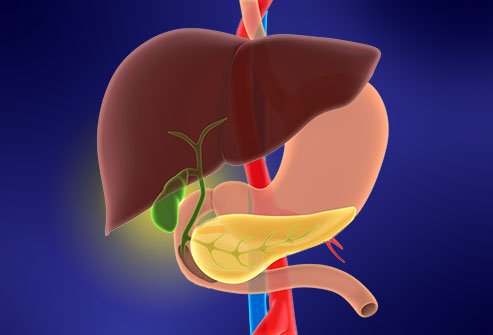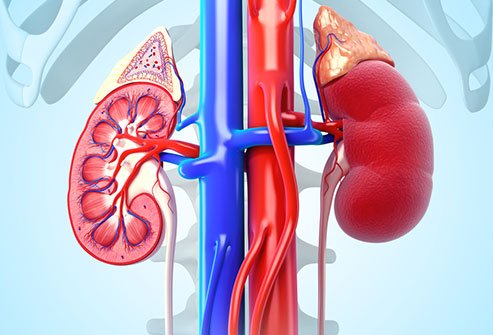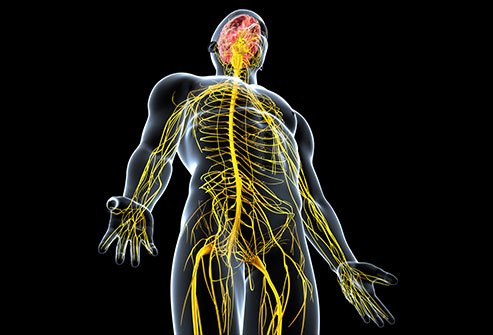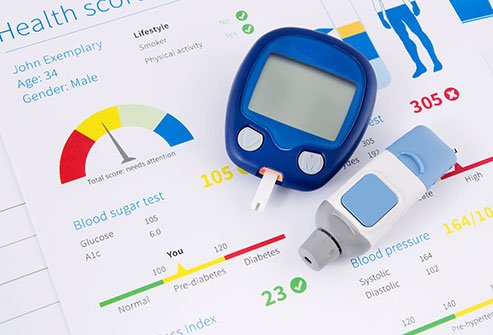The 18 Most Expensive U.S. Medical Conditions
How Much Does Health Care Cost Every Year?

It should come as no surprise that health care in the United States is expensive. According to the latest comprehensive data from 2014, health care spending in the United States costs about $3.2 trillion each year. Roughly a third of that cost comes from the top 18 most expensive conditions.
In the following article, we will take a closer look at those costly conditions. You will learn some of the most expensive medical conditions, how many people visit hospitals for each condition every year, as well as how much treatment costs annually. Statistics come from 2014, the most recent comprehensive data available for health care costs. Read on to learn how to avoid these disorders, protecting both your health and your bank account.
#18: Stroke

What it Is:
Stroke happens when the blood supply sent to the brain is cut off, causing cell death and a variety of brain problems, including loss of memory and muscle control.
Number of Hospital Stays Per Year:
60.3 million
What it Costs:
$28 billion in 2014 (this rose to $33 billion in 2016)
How to Prevent It:
Get regular exercise. Eat a healthy diet, including a wide variety of vegetables. Smokers have double the risk of stroke, so quit smoking. Likewise drinking alcohol excessively has been linked to an increased stroke risk, so drink only in moderation, if at all.
#17: Gallbladder, Pancreatic, and Liver Disease

What it Is:
The gallbladder, pancreas, and liver are nearby organs that work together as part of your digestive system. They can all become inflamed, causing serious health problems. This group of conditions can also include gallstones, jaundice, and cirrhosis.
Number of Hospital Stays Per Year:
70.2 million
What it Costs:
$30 billion
How to Prevent It:
Drink alcohol moderately, if at all. Ask your doctor about any medication you are prescribed and its risks, and do not take acetaminophen in excess. Eat a balanced diet, don’t smoke, and exercise regularly.
#16: Kidney Disease

What it Is:
Kidney disease refers to kidney damage, which can take places slowly over many years. The kidneys are responsible for filtering the blood and making urine. Their failure can require the expensive procedure known as dialysis.
Number of Hospital Stays Per Year:
21.3 million
What it Costs:
$33 billion
How to Prevent It:
Exercise, eat a balanced diet, quit smoking, reduce your consumption of sodium, and maintain a healthy weight.
#15: Central Nervous System Disorders

What it Is:
Central nervous system disorders affect the complex interworking of the brain and spinal cord. They include a variety of conditions, including meningitis, polio, Bell’s palsy, epilepsy, Parkinson’s disease, and Alzheimer’s disease.
Number of Hospital Stays Per Year:
25 million
What it Costs:
$33 billion
How to Prevent It:
Exercise regularly. Don’t smoke. Get enough rest. Eat a balanced diet. Get your vision and hearing tested regularly, as these are the means by which your brain records information. Improve your attention span by learning new skills. Prevent head injuries by always wearing a seatbelt, never drinking before sports or driving, and by wearing a helmet when cycling, skating, rock climbing, or while performing similarly risky activities.
#14: Upper Gastrointestinal Tract Disorders

What it Is:
These are disorders that affect your stomach and esophagus. Examples include GERD, dyspepsia, and gastric ulcers.
Number of Hospital Stays Per Year:
13 million
What it Costs:
$35 billion
How to Prevent It:
These disorders are wide-ranging, so there may not be a single list of preventative measures you can take. However there are a few diet tips you can follow if you’ve been diagnosed. Avoid alcohol if you have a peptic ulcer. If you have GERD, avoid high-fat meals. If your esophagus is inflamed, steer clear of spicy and sour foods.
#13: Childbirth

What it Is:
Anytime a child is born in the hospital under normal circumstances, that birth is included in the total. Birth and pregnancy complications cost an additional $5.6 billion per year.
Number of Hospital Stays Per Year:
75.1 million
What it Costs:
$36 billion
How to Prevent It:
In this case your goal may not be to prevent pregnancy, though if it is, use birth control. Aside from that, there are some ways to keep your childbirth costs down. Go over the bill your hospital sends you, and dispute any errors, which are common. Ask for a detailed, itemized list of every test, medicine, and procedure. Next, check your costs against what your insurance plan says it will cover, and make sure they do what they say they will. Also be aware of any financial aid you may qualify for.
#12: Hyperlipidemia (High Cholesterol)

What it Is:
High cholesterol can be genetic or acquired, and it presents a variety of health risks. People with hyperlipidemia are at greater risk of stroke, heart attack, and hardening of the arteries (atherosclerosis). The condition is typically chronic, and requires ongoing treatment.
Number of Hospital Stays Per Year:
2.8 million
What it Costs:
$36 billion
How to Prevent It:
High cholesterol can be genetic, meaning if you’re born with a predisposition to this condition, there isn’t much you can do to completely prevent it. However there are ways to limit the dangers associated with hyperlipidemia. Stay away from saturated and trans fats, as well as sweets. Exercise regularly. Don’t smoke. Lose weight or maintain a healthy weight. Keep your dinner plate flush with fruits, vegetables, whole grains, fish, nuts, and poultry.
#11: Lupus and Related Disorders

What it Is:
Lupus is a common autoimmune disease that causes the immune system to attack healthy body tissue. It causes fatigue, skin rashes, light sensitivity, and a variety of other symptoms. Treatment often requires the use of costly drugs.
Number of Hospital Stays Per Year:
30.5 million
What it Costs:
$38 billion
How to Prevent It:
The cause of lupus is unknown, though some studies suggest it may be hereditary. While lupus cannot yet be prevented, some people can successfully control the symptoms. They do this by limiting their sun exposure, eating healthy, getting plenty of rest, exercising moderately when they are able, and limiting stress.
#10: Infectious Diseases

What it Is:
This is an umbrella term for a wide variety of potential infections, including HIV/AIDS, tuberculosis, malaria, and many, many more.
Number of Hospital Stays Per Year:
24.4 million
What it Costs:
$41 billion
How to Prevent It:
Be sure to maintain proper hygiene. Wash your hands after using the restroom, before and after eating, and after petting animals. Practice safe sex. When traveling overseas, be careful about drinking the water, and make sure your immunizations are up to date. Avoid contact with vectors of infectious diseases like mosquitoes and ticks.
#9: Back Problems

What it Is:
Back pain is one of the most common complaints, and when it is sufficiently serious, it sends nearly 28 million Americans to the hospital every year. Back problems are many, and include scoliosis, spondylosis, and spinal stenosis.
Number of Hospital Stays Per Year:
27.7 million
What it Costs:
$48 billion
How to Prevent It:
Keeping your back active in a low-impact way can help strengthen it. Yoga is a good choice, and so are cycling and swimming. Losing weight can keep pressure off your back, too. If your job requires you to sit for long periods, take breaks, get up, and stretch.
#8: Hypertension (High Blood Pressure)

What it Is:
High blood pressure results from pumping too much blood through too narrow of arteries. It can lead to heart disease and other problems. This health problem is very common; it is thought to affect one out of every three Americans. What’s worse—only about half of these keep their blood pressure under control.
Number of Hospital Stays Per Year:
15.8 million
What it Costs:
$50 billion
How to Prevent It:
High blood pressure is known as the “silent killer” because it has no symptoms. So get your blood pressure checked regularly. To avoid hypertension, reduce your consumption of sodium, exercise regularly, eat plenty of fruits and vegetables and drink alcohol moderately, if at all.
#7: Osteoarthritis and Other Joint Disorders

What it Is:
Joint pain is quite common. About 20%-30% of American adults has arthritis, and the most common form is osteoarthritis. These problems become more likely as you age, and are reported more frequently in women than in men.
Number of Hospital Stays Per Year:
19.7 million
What it Costs:
$80 billion
How to Prevent It:
You can reduce the burden on your joints by losing weight. Exercising and using your joints in low-impact ways can ease joint pain as well. Consider swimming and cycling to deliver low-impact exercise that keeps your joints moving.
#6: COPD and Asthma

What it Is:
Both of these conditions involve chronic inflammation of the airways. The major difference is that asthma is often reversible, whereas COPD is not. In fact the only thing currently known to slow the progression of COPD is to stop smoking.
Number of Hospital Stays Per Year:
33.1 million
What it Costs:
$82 billion
How to Prevent It:
As mentioned above, COPD is usually caused by smoking, so quitting smoking is crucial if you’ve been diagnosed with this condition. Asthma can be hereditary, so you may not be able to prevent it entirely. However once you know you have asthma, you can control it by avoiding asthma triggers and taking medicine.
#5: Cancer

What it Is:
Cancer is really a variety of diseases in which your body’s cells start dividing endlessly and spreading to nearby tissue. Every year, more than 1.5 million new cases of cancer are diagnosed in the United States. In addition, more than half a million Americans die of cancer each year.
Number of Hospital Stays Per Year:
27 million
What it Costs:
$88 billion
How to Prevent It:
There are many forms of cancer, and you can’t prevent all of them, but you can prevent many of the most dangerous and most common forms of cancer by following these lifestyle tips: quit smoking, lather on sunscreen when you plan to be outdoors, eat a healthy, plant-based diet, exercise, and don’t drink to excess.
#4: Diabetes

What it Is:
When your body loses the ability to properly break down the sugar from your diet and use it as energy, the condition is known as diabetes. Diabetes can cause serious health problems, including kidney failure, blindness, and heart disease.
Number of Hospital Stays Per Year:
23.6 million
What it Costs:
$91 billion
How to Prevent It:
For starters, get tested; about a quarter of those with diabetes have no idea they have the condition. For diabetes prevention, maintain a healthy weight, eat a balanced diet, and exercise five days a week or more for 30 minutes at a time.
#3: Trauma-Related Injuries

What it Is:
Trauma is the result of an injury such as being struck by a blunt force (like a car accident) or by being pierced by a sharp object such as a knife. Trauma kills more Americans under age 44 than any other disease or condition.
Number of Hospital Stays Per Year:
39.3 million
What it Costs:
$100 billion
How to Prevent It:
A lot of these traumatic injuries involve driving. So follow safety laws—wear your seatbelt, and make sure all your passengers do, too. Don’t text and drive. And never, ever drive while drunk.
#2: Heart Conditions

What it Is:
Heart conditions cover a wide range of conditions that include heart attacks, valve problems, heart failure, and heart disease.
Number of Hospital Stays Per Year:
53.2 million
What it Costs:
$105 billion
How to Prevent It:
Your diet can make a big difference. Focus on fruits and vegetables, along with other high-fiber foods such as whole grains. Don’t smoke, get half an hour of exercise more days than not, and steer clear of cholesterol and saturated fat.
#1: Mental Disorders

What it Is:
Mental disorders (also called mental illness) include many potential psychological concerns that include depression, ADHD, autism, psychosis, schizophrenia, and eating disorders. Substance abuse is frequently accompanied by mental illness. In a given year, about one in five Americans will experience a mental disorder.
Number of Hospital Stays Per Year:
15.7 million
What it Costs:
$110 billion
How to Prevent It:
Understand that mental disorders are quite common, and they are nothing to be ashamed of. So don’t hesitate to get professional help when you need it. Watch out for warning signs, such as sadness that continues for a long time, withdrawing from friends and family, extreme fears, and intense emotional ups and downs. One group that can help is Mental Health America—consider reaching out to them for more help.
The 18 Most Expensive U.S. Medical Conditions
IMAGES PROVIDED BY:
- iStock
- iStock
- iStock
- iStock
- iStock
- iStock
- iStock
- iStock
- MedicineNet
- iStock
- iStock
- iStock
- iStock
- iStock
- iStock
- iStock
- iStock
- iStock
- iStock
REFERENCES:
- CDC: “Arthritis-related statistics," “Diabetes,” "High Blood Pressure."
- Centers for Medicare and Medicaid Services: “National Health Expenditures 2015 Highlights
- European Respiratory Journal: “Similarities and differences between asthma and chronic obstructive pulmonary disease: treatment and early outcomes.”
- International Foundation for Functional Gastrointestinal Disorders: “Upper GI Disorders.”
- Johns Hopkins: “Overview of Nervous System Disorders.”
- Lourdes Health System: “Liver, Pancreas, Gallbladder Conditions.”
- National Alliance on Mental Illness: “Mental Health by the Numbers.”
- National Cancer Institute: “Cancer Statistics.”
- National Institute of General Medical Sciences: “Trauma Fact Sheet.”
- National Stroke Association: “What Is Stroke?”
- NIH: “Kidney Disease Basics," “Systemic Lupus Erythematosus," “What Is Back Pain?”
- Society for Vascular Surgery: “Hyperlipidemia.”
- US DHHS Agency for Healthcare Research and Quality: “Total Expenses and Percent Distribution for Selected Conditions by Type of Service: United States, 2014.”
- World Health Organization: “Infectious Diseases.”
© 1996-2022 WebMD, LLC. All rights reserved.
Source slideshow on OnHealth


